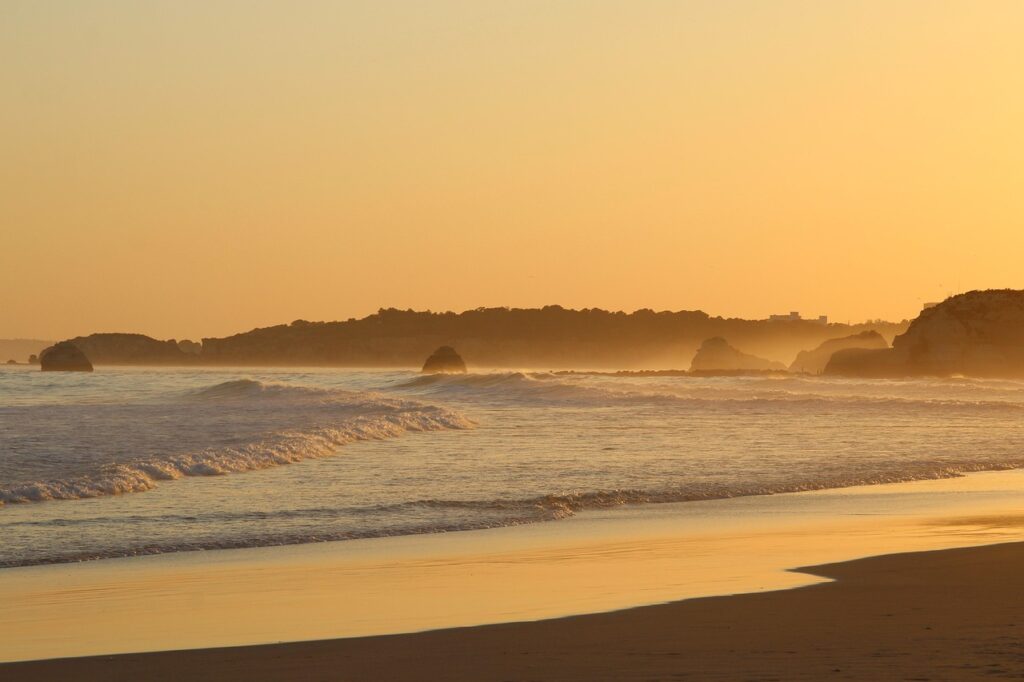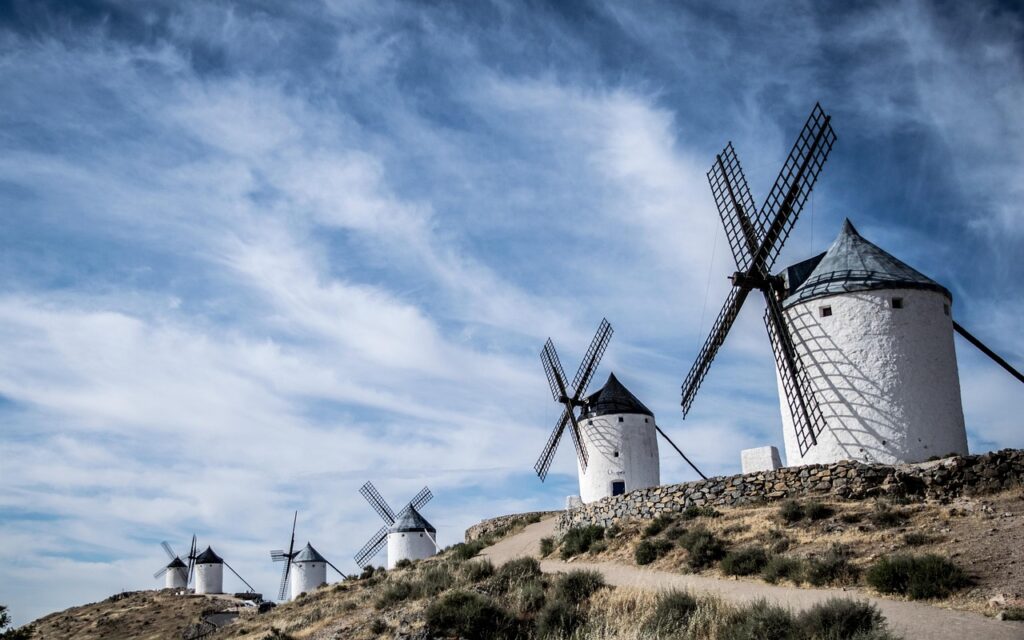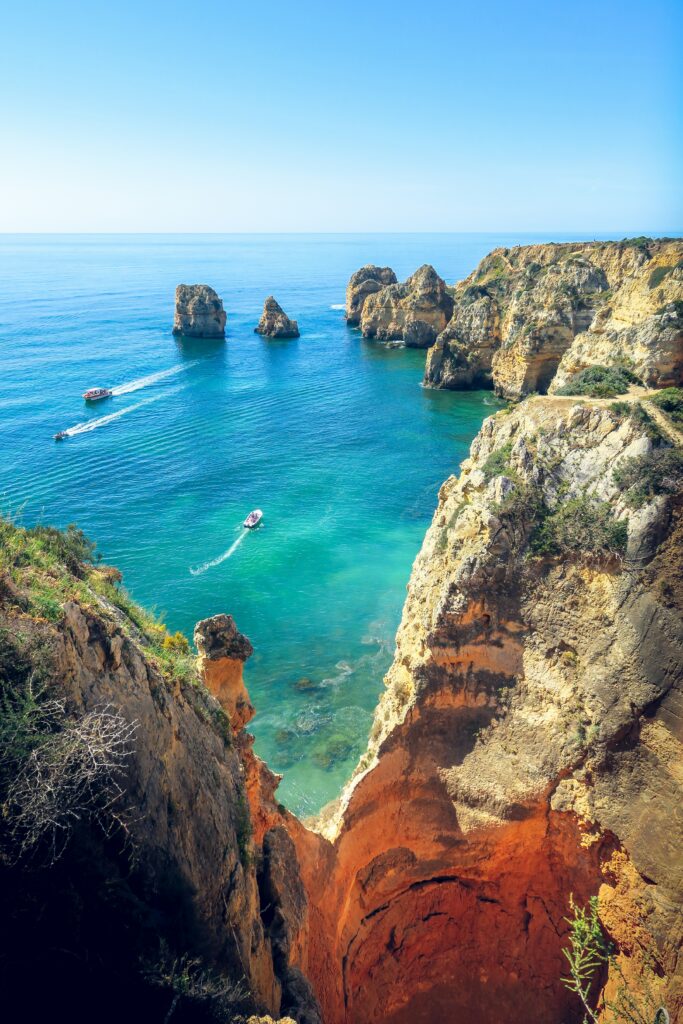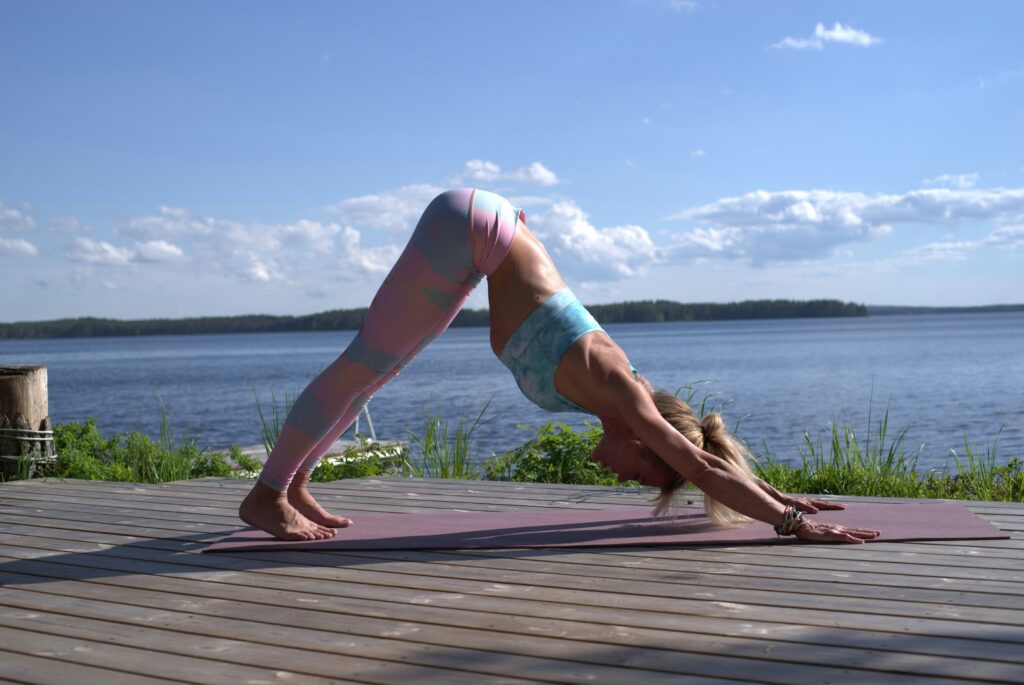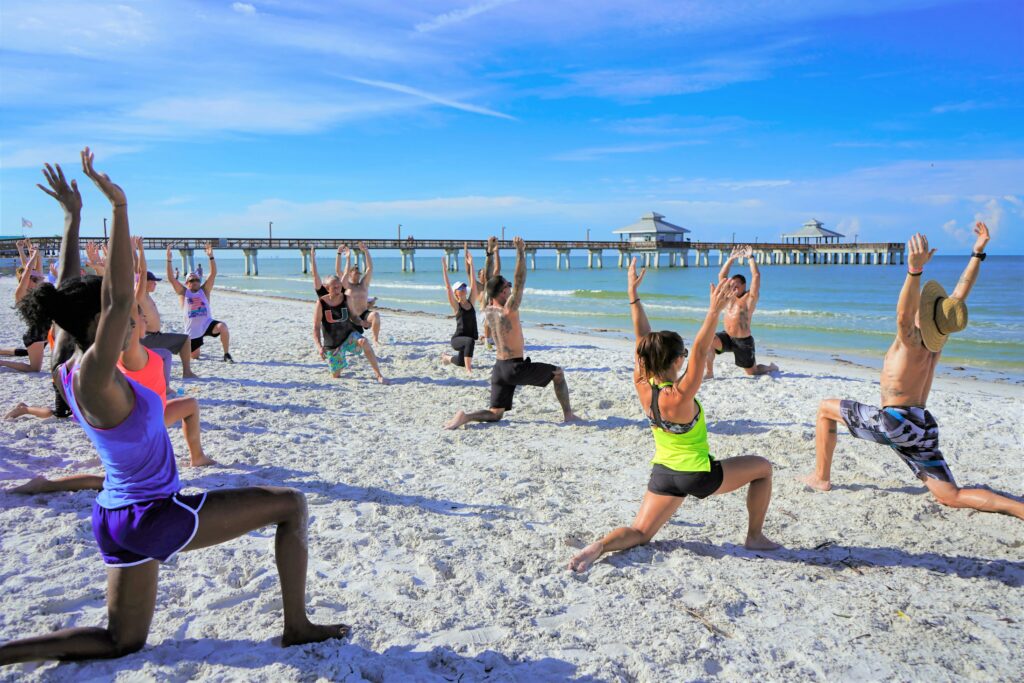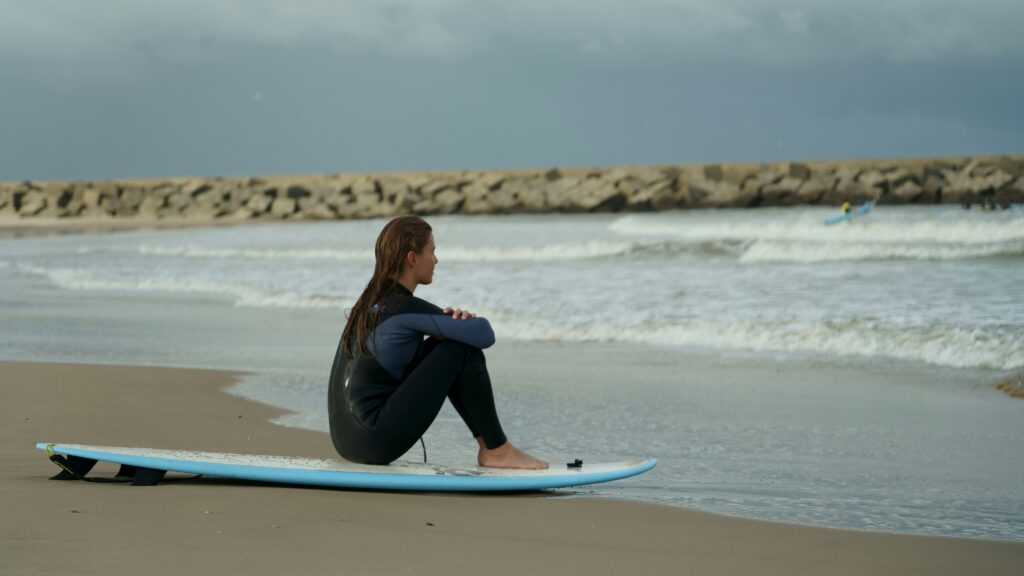The Dolomites, in northern Italy, are unlike anywhere else in the country — a landscape of pale limestone peaks, forests, and mirror-still lakes.
Where the southern regions offer warmth and sensuality, the Dolomites provide quiet strength: clean air, open space, and a sense of order that invites the mind to slow down.
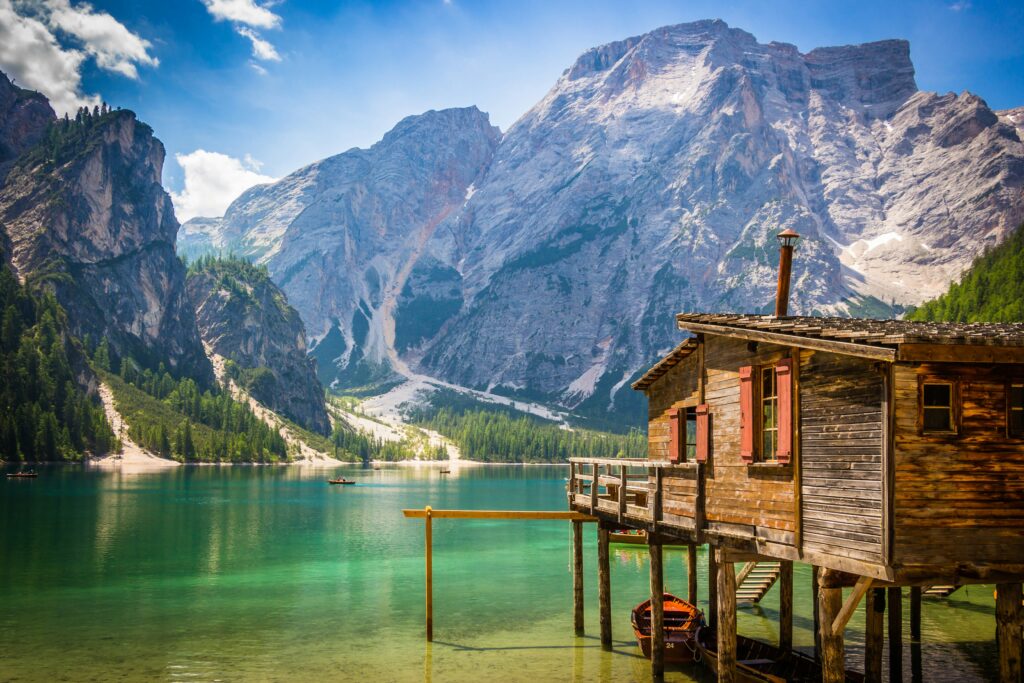
This UNESCO World Heritage area is ideal for yoga and wellness retreats focused on breath, movement, and reconnection with nature.
You can practise outdoors surrounded by mountain silence, hike through pine forests, or rest in eco-lodges that blend Alpine comfort with Italian hospitality.
When to Go
- June–September: Best for outdoor yoga and hiking. Temperatures average 15–25 °C; days are long and clear.
- May & October: Cooler but peaceful; autumn colours or early snow create striking scenery.
- December–March: Winter wellness season — restorative retreats combined with spa time and snow walks.
Ski resorts like Ortisei and Cortina host yoga-ski programs and alpine spa experiences.
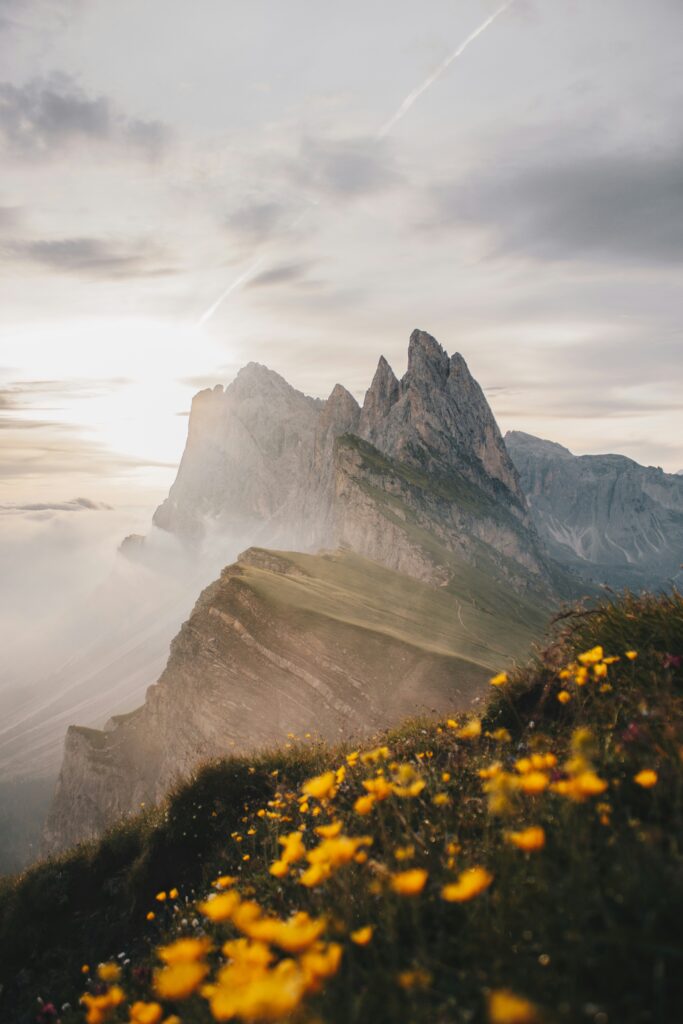
How to Get There
By Air
- Bolzano (BZO): Small regional airport closest to Val Gardena and Alpe di Siusi.
- Innsbruck (Austria): 2 h drive to many northern valleys.
- Venice (VCE) or Verona (VRN): 2–3 h transfers with car rental or shuttle service.
By Train & Car
- Rail lines connect Bolzano, Bressanone, and Trento to Verona and Innsbruck.
- Renting a car makes exploring valleys easier — roads are well maintained and scenic.
Local Travel
Efficient bus networks link villages, but most retreat hosts arrange transfers from Bolzano or major train stations.
The Mood of the Mountains
The Dolomites have a rare kind of silence — not empty, but full of presence.
Here the air feels sharper, colours cleaner, thoughts slower.
Wooden chalets, church bells, and alpine meadows set the rhythm; you wake with daylight and sleep with the stars.
Culturally, this is a tri-lingual region (Italian, German, Ladin), where precision meets warmth.
Everything — from food to schedules — has a quiet reliability that supports focus and rest.
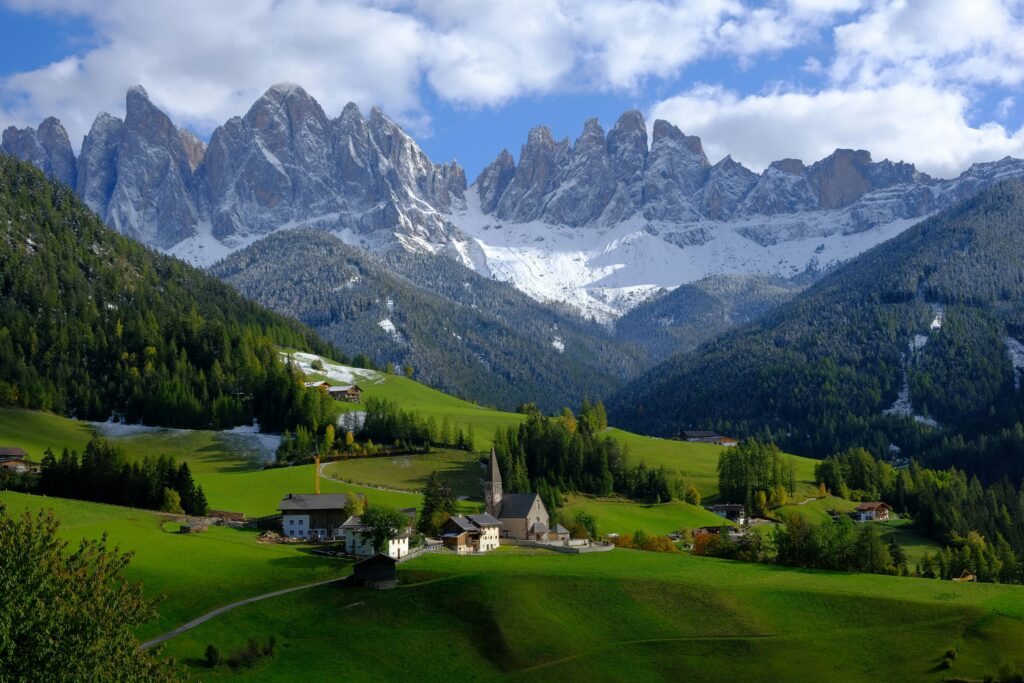
What to Eat & Drink
Expect a nourishing mix of Alpine and Mediterranean influences — simple, seasonal, and satisfying.
Typical Dishes
- Canederli (bread dumplings with herbs or cheese).
- Polenta with wild mushrooms or gorgonzola.
- Speck Alto Adige (lightly smoked ham).
- Mountain cheeses such as Puzzone di Moena or Malga.
- Fresh trout, local apples, and forest berries in summer.
Drinks
- Crisp white wines from Alto Adige: Pinot Grigio, Gewürztraminer, Kerner.
- Herbal teas made from alpine flowers, and spring water directly from the source.
Many retreats serve vegetarian or plant-forward versions, using local farms and dairies. Meals are hearty but clean — the kind that leave you energised, not heavy.
What to See & Do
1. Alpe di Siusi (Seiser Alm)
Europe’s largest high-altitude meadow.
Perfect for open-air yoga decks, sunrise meditation, and easy hikes among wildflowers.
2. Val Gardena & Ortisei
Base for scenic trails, art workshops, and mountain-view saunas.
Cable cars offer effortless access to panoramic spots for outdoor classes.
3. Cortina d’Ampezzo
Elegant and lively, with boutiques, galleries, and luxury spas.
Excellent for combining wellness retreats with light adventure — rock climbing, cycling, or forest bathing.
4. Lago di Braies & Lago di Carezza
Iconic emerald lakes framed by pines and peaks — ideal day trips for journaling, photography, or quiet reflection.
5. Local Culture
Visit wood-carving studios in Val Badia, monasteries near Bressanone, and mountain huts (rifugi) that serve homemade herbal soups.
Why It Works for Yoga & Wellness
- Pure Environment: Altitude air improves breathing and sleep quality.
- Natural Silence: Wide valleys and forest trails offer solitude even in summer.
- Holistic Culture: Locals live rhythmically — early mornings, real food, daily walks.
- Thermal & Spa Culture: Centuries-old spa towns like Merano and Comano pair naturally with restorative yoga.
- All-Season Balance: Active in summer, introspective in winter — perfect for cyclical wellness.
Retreats here tend to emphasise balance between body and environment: grounding, detoxing, and reconnecting to natural pace.
Practical Tips
- Weather: Even in summer, evenings are cool — pack layers and a rain jacket.
- Altitude: Most valleys sit 1,000–1,500 m above sea level; hydrate well.
- Etiquette: Quiet after 10 p.m. in small villages. Punctuality is valued.
- Transport: Mountain roads are winding — plan transfers in daylight.
- Gear: Comfortable hiking shoes, a warm sweater, swimsuit for spa use.
When to Combine With Other Regions
Pair the Dolomites with:
- Lake Garda for a few days of lakeside relaxation.
- Venice for art and culture before or after your retreat.
- South Tyrol wine roads for a scenic wellness-food experience.
Final Reflection
The Dolomites invite a different kind of stillness — one built on clarity rather than softness.
Here, wellness feels elemental: clean air, honest food, honest rest.
Days end with mountain silence and stars close enough to touch, reminding you that balance can be quiet, simple, and beautifully high above the noise of life.

